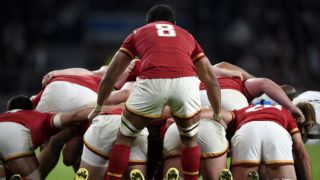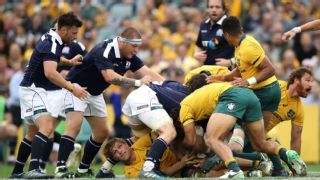|
The six law amendments approved by World Rugby last week come into effect in the Northern Hemisphere on Tuesday. Designed to make the game easier to referee and understand, and targeting the scrum and tackle/ruck area, attention at the start of the season will focus on how they bed in. So, as coaches and players around the world hone up on the tweaks, ESPN has taken a look at three key amendments and how they may impact on the professional game. Scrum Law 20.9 (b) - The No. 8 shall be allowed to pick the ball from the feet of the second-rows. Northern Hemisphere: No longer will the men at the base of the scrum have to worry about juggling the ball with their feet if they are able to pick up and drive at the opposition. It isn't hard to imagine the likes of Billy Vunipola or Taulupe Faletau doing exactly that before bulldozing their way over the try line. It will be interesting to see how teams will now defend a five-metre shove. -- Martyn Thomas Southern Hemisphere: South African and New Zealand teams love to attack their opponents' scrum feed when they sense weakness. But this change in the law may help teams that are under pressure get rid of the ball before they disintegrate. The No. 8 doesn't have to wait for the ball to come all the way to the back, he can take it out under the locks' feet when the pressure starts to come through. -- John Goliath Law 20 - Once the ball touches the ground in the tunnel, any front-row player may use either foot to try to win possession of the ball. One player from the team who put the ball in must strike for the ball. NH: The first time two packs collide in the Aviva Premiership could well be interesting. Will the props stick to what they've been doing for their whole careers, or will the urge to hook the ball become too much? As an amendment it seems a fair one, and should, eventually, produce quicker ball. But could we also see a few ungainly collapsed scrums early on as front rows get up to speed? -- MT SH: World Rugby is complicating the lives of our beloved props. All they really want to do us run with the ball and offload like Sonny Bill Williams, and wait for unsuspecting scrumhalves to run across field into their channel. But this new law could have a big impact at scrum time. A prop hooking the ball could leave himself exposed to the second shove. Multitasking may not be props' forte ... -- JG Ruck Law 16 - A ruck commences when at least one player is on their feet and over the ball which is on the ground (tackled player, tackler). At this point the offside lines are created. Players on their feet may use their hands to pick up the ball as long as this is immediate. As soon as an opposition player arrives, no hands can be used. NH: This could be the most damaging amendment to Northern Hemisphere sides. Stealing ball, slowing it down, or winning penalties has become the stock and trade for opensides at the breakdown. Sam Warburton has made a career of it, and his work in this area in tandem with Sean O'Brien was so important to the British & Irish Lions in New Zealand. Under the new rules they will have to alter the way they approach the ruck, concentrating on getting the opposition out of the way rather than stealing the ball. -- MT SH: South African teams may be in for the win in this department. Most South African Super Rugby franchises -- as well as the Springboks -- don't really play with a specialist openside flank. They like size in their loose trios, preferring players such as Siya Kolisi who blast open rucks, instead of players who compete for the ball on the ground. New Zealand teams have many classic opensides, but they are a lot more versatile. While they will be hamstrung to by this law, the Kiwi teams are also renowned for their ability to counter ruck effectively. -- JG
|
